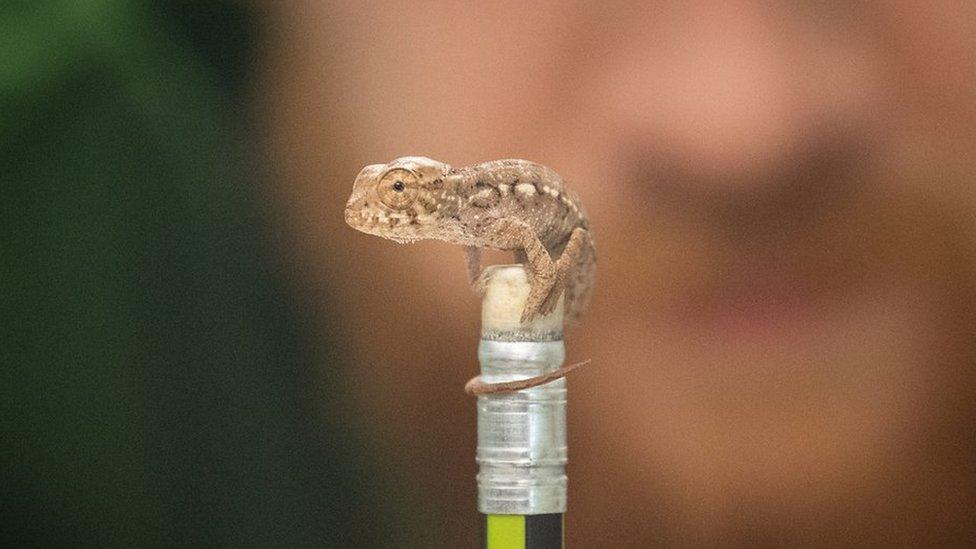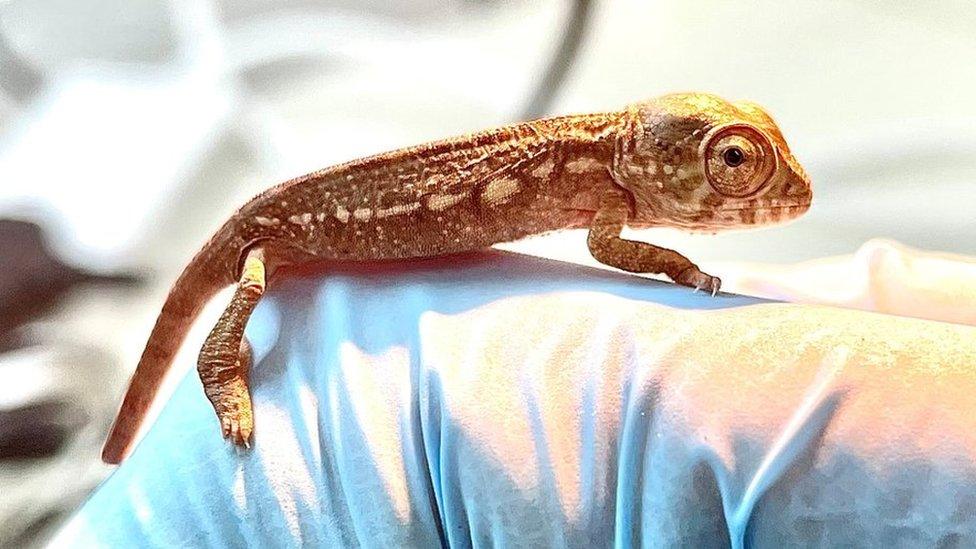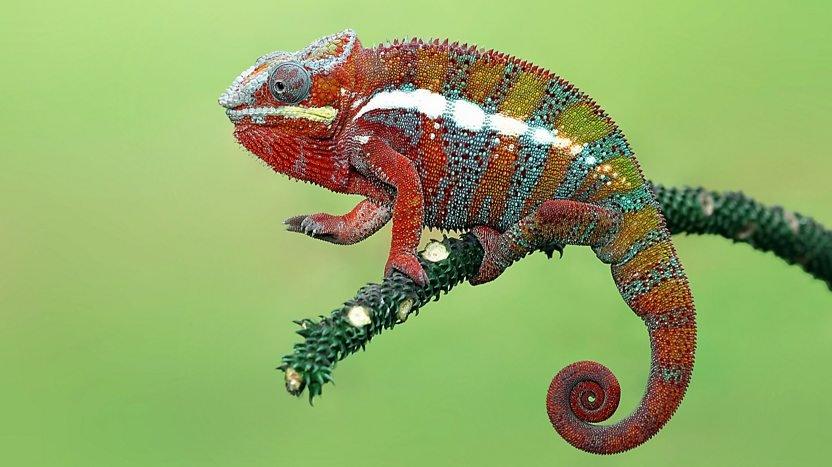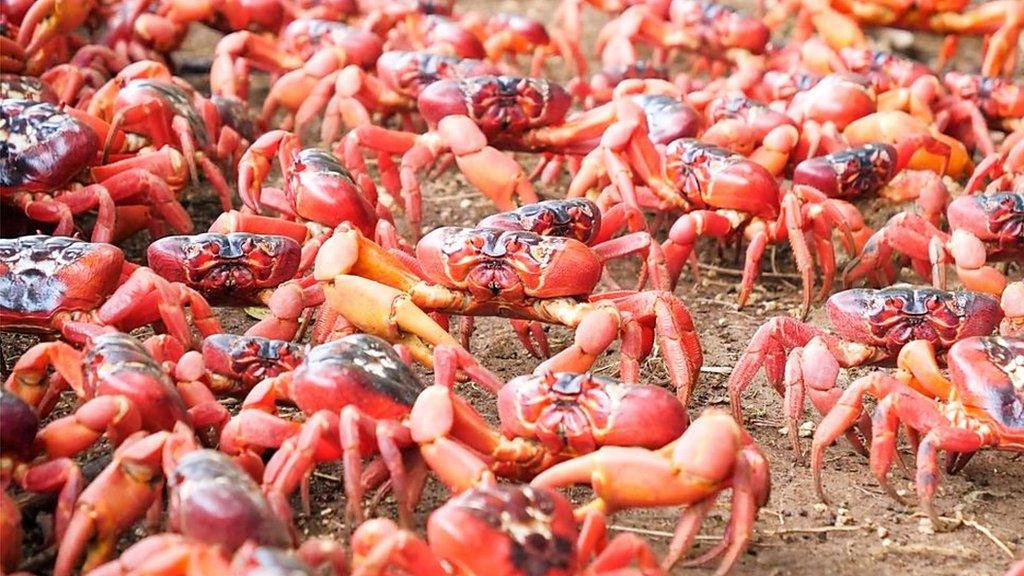Adorable panther chameleon born at Whipsnade Zoo
- Published
- comments

Meet Titch, Dunstable's newest (and smallest) resident!
This might be the most adorable reptile you've ever seen in your life.
Don't say we didn't warn you!
This tiny chameleon has been born at ZNL Whipsnade Zoo in Dunstable and LOOK. HOW. CUTE!
The baby panther chameleon was born on Sunday 7 November and is only 3cm long - so small that zookeepers were able to photograph it scampering across pencils and up a zookeeper's finger!

Titch is so small, it can fit comfortably on a pencil!
It's been given the very apt nickname of 'Titch', which it will keep until zookeepers can work out whether it's male or female.
The East England zoo have said they hope it won't be long until Titch has some siblings, as they're waiting on more baby lizards to hatch.

Titch is hoping to get some siblings in the not-too-distant future
Team leader Alex Cliffe said: "This intricate, tiny creature is a wonderful addition to ZSL Whipsnade Zoo. They are doing very well, snacking on fruit flies and exploring their environment."
Chameleons are known for being able to change colour. Currently, Titch can only go from dark to light brown, but as it gets older, the little lizard will be able to match its skin to all kinds of colourful surroundings.
The top layer of a chameleon's skin contains two layers of special cells called iridophores
These contain pigments (which are just what give natural things like plants and skin their colour and nanocrystals (which is a very tiny crystal)
These nanocrystals are in a variety of sizes, shapes and arrangements and the chameleon can move them around to reflect light in different ways, enabling them to change colour
They control the nanocrystal arrangement by relaxing or exciting the skin, so that the crystals move closer together or further apart

An adult panther chameleon showing off its colours
But why do they change their skin in this way?
"People think that chameleons change colour for camouflage, and whilst that is sometimes true, the primary role of their incredible colour-changing ability is associated with social signalling and communication, or as a response to changes in their environment, like temperature or humidity," Alex explained.
- Published18 November 2021

- Published9 July 2021

- Published18 October 2020
